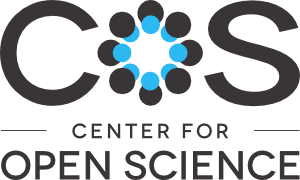Location
Our mission is to increase openness, integrity, and reproducibility of research.
These are core values of scholarship and practicing them is presumed to increase the efficiency of acquiring knowledge.
For COS to achieve our mission, we must drive change in the culture and incentives that drive researchers’ behavior, the infrastructure that supports their research, and the business models that dominate scholarly communication.
This culture change requires simultaneous movement by funders, institutions, researchers, and service providers across national and disciplinary boundaries. Despite this, the vision is achievable because openness, integrity, and reproducibility are shared values, the technological capacity is available, and alternative sustainable business models exist.
COS's philosophy and motivation is summarized in its strategic plan and in scholarly articles outlining a vision of scientific utopia for research communication and research practices.
Because of our generous funders and outstanding partners, we are able to produce entirely free and open-source products and services. Use the header above to explore the team, services, and communities that make COS possible and productive.
Members:
Resources
Displaying 256 - 260 of 447WPŁYW WDROŻENIA POŚREDNIEJ ZMIANY UŻYTKOWANIA GRUNTÓW NA OGRANICZENIE EMISJI GAZÓW CIEPLARNIANYCH W CYKLU ŻYCIA BIOPALIW
The aim of the research was to estimate emissions and greenhouse gas reductions resulting in the full life cycle of biofuels and to determine what effect on the reduction of GHG emissions will have when taking into account the additional issue related to the implementation of ILUC. It was found that the production of bioethanol, ensuring compliance with the criteria of sustainable production and acquisition (including ILUC) GHG emission reduction ≥ 50% is possible with wheat and corn crops production with traditional ploughing with crop residues incorporation.
Community forestry in Tanimbar, and industrial prospective scenarios
In its present state, the analysis of the wood industry system in Tanimbar archipelago only covered the South part of the Yamdena island. In this part of the island, the wood industry system feeds the demand of the local villages and of Saumlaki. Among the villages of South Yamdena, two villages (Wermatan and Ilngei) are remarkable with their high level of wood activities. Thus these are analysed in the following sections. In the north part of the Island, the system feeds the local villages, the city of Larat, but also some outer markets.
Forest and Forest Land Valuation - How to Value Forests and Forest Land to Include Carbon Costs and Benefits
Presentation by Richard Meade to the AARES 53rd Annual Conference held 10-13 February 2009 in Cairns Australia.Forest and Forest Land Valuation - How to Value Forests and Forest Land to Include Carbon Costs and Benefits. forest, forest land valuation, carbon costs,
Land use planning: the impact on retail productivity
The restrictions that planning policies impose on retail development have significantly reduced the productivity of supermarkets, according to Paul Cheshire and colleagues. Land use regulation, regulatory costs, firm productivity, retail
Land Use Change and Ecosystem Valuation in North Georgia
A model of land allocation at the aggregate watershed level was developed assuming profit/net benefit maximization under risk neutrality. The econometric land use model was analyzed as an equation by equation SURE model as all the independent variables were the same for both equations. In analyzing effect of land use change on water quality, we took year 2005 as our baseline and postulated three land use scenarios.


